Shutterstock.com
Have you noticed the swinging pouch of loose skin that hangs from your cat’s belly? Perhaps you have heard of something called the primordial pouch. Well, what exactly is a primordial pouch?
Key Takeaways
A primordial pouch is a normal part of a cat’s anatomy.
A primordial pouch allows your cat to have a wider range of movement and helps them evade predators.
While overweight cats may have a more prominent primordial pouch, it is not necessarily a sign of being overweight.
That swinging pouch on your pet is actually a normal part of a cat’s anatomy. However, it’s important to distinguish a primordial pouch from other causes of a distended abdomen or change in your cat’s shape. This is because other health conditions can have a similar appearance.
You may be wondering why cats have a primordial pouch, what it looks like, and when you should be concerned. Learn whether your cat’s belly is normal or something you should contact your veterinarian about.
What Is a Primordial Pouch?
A primordial pouch is a flap of excess skin containing some fat that hangs from the lower belly. All cats have a primordial pouch, whether they are male, female, overweight, underweight, or a perfectly healthy size. However, the size and shape of the primordial pouch will vary.
For instance, cats who are carrying some extra pounds will likely have a larger, more pronounced, fatty primordial pouch than cats who are a healthy weight. Underweight cats may only have subtly loose skin in this area. It’s not just domestic cats that have a primordial pouch; big cats like lions and tigers have it too.
What Is the Purpose of a Primordial Pouch?
The primordial pouch on your cat serves several purposes in your cat’s well-being. Here are a few:
Movement and Flexibility
Cats are famously flexible. They can fit into tight spaces, stretch and twist to outrun predators, or groom hard-to-reach body parts. An extra layer of excess skin is vital to a cat’s flexibility, allowing them to demonstrate normal cat behaviors and even fill their stomachs when their food supply is unpredictable. While the skin of their face, lower limbs, and tail isn’t loose, they have excess surrounding their body, especially their abdomen and neck.
Escaping Predators
Cats are prey animals, and having a belly flap of extra skin and fat is an extra line of defense. It means that if they are attacked by larger predators, this skin and fat take the brunt of the injury from claws and teeth. While this is sure to be painful, it’s less likely to be life-threatening than if the damage were to their internal organs, like their liver, spleen, bladder, or intestines.
This extra skin can also fool predators who might think they’ve succeeded in incapacitating the cat and let their guard down, only for the cat to rush away to safety. Of course, this isn’t so useful for house cats!
Fat Storage
A prominent primordial pouch does not necessarily indicate that a cat is overweight. Shutterstock.com
The fatty tissue within the primordial pouch acts as a fat store, meaning that wild cats with unpredictable food supplies can store energy when food is abundant to keep them going when food is scarcer. Of course, since domestic cats have a stable and predictable food supply, this function isn’t required.
Air Resistance
Again, this is more of a benefit to wild cats than domestic cats, but a primordial pouch has been thought to contribute to keeping cats in the air for longer. In the same way that flying squirrels spread out in the air, the primordial pouch could help a cat jump further and protect them if they fall.
Primordial Pouch or a Sign of a Health Condition?
If your cat is bright, eating well, and a healthy weight, and has no other symptoms, it’s unlikely that you need to be concerned about your cat’s prominent primordial pouch. In many healthy cats, the primordial pouch is reasonably prominent, despite them being a normal weight.
This may be due to spaying or neutering, previous weight gain, or pregnancy and lactation. Your cat’s breed might also be a factor, since Bengals, Japanese Bobtails, and Egyptian Maus have more prominent pouches. However, if you are concerned about your cat’s hanging belly, it’s worth scheduling an appointment with a veterinarian, to check that everything is normal.
A cat’s belly should feel soft and relaxed. If your cat’s belly feels firm, check out this article on when to worry to read about the possible causes.
Other Causes for a Cat’s Changing Belly Shape
There are other issues that can cause your cat’s belly to change shape that are worth considering:
Obesity
A cat’s belly pouch contains some fatty tissue, and this will expand if your cat gains weight. In addition to a prominent primordial pouch, you might also notice that they’ve gained weight around their neck, or abdomen in general.
You can use our Cat Obesity Chart to find out if your cat is overweight and read Feline Obesity for information on how to help them. Don’t forget, though, that your vet will also be able to work out your cat’s body condition score and give you some pointers for helping them lose weight.
Pregnancy and Lactation
If your cat is obese, it is worthwhile to take them to a veterinarian to come up with a plan to help them lose weight. Shutterstock.com
Just like humans, a female cat’s body changes shape during pregnancy and lactation. Her abdomen will expand and become firmer as the fetuses grow inside her uterus. Towards the end of pregnancy, her mammary glands will become more prominent, and when her milk comes in after delivery, they will become very enlarged. Although these changes subside, a more prominent primordial pouch may remain.
Fluid (Edema)
Edema is body fluid that pools in places where it shouldn’t. While with heart problems this is commonly in the chest cavity, it may also pool in the abdominal cavity or under the skin (known as subcutaneous edema). Other conditions that cause subcutaneous edema include kidney and liver disease and other causes of low body protein levels.
Trauma
If the primordial pouch becomes traumatized perhaps during an altercation with another cat or something more serious like an impact from a vehicle, the tissue may become bruised, swollen, or even infected.
Related Conditions:
- Heart Disease in Cats: Causes, Symptoms, & Treatment
- Kidney Failure in Cats: Symptoms, Diagnosis, & Treatment
- Liver Failure In Cats: Causes, Symptoms, & Treatment
Frequently Asked Questions
Is my cat overweight if they have a primordial pouch?
All cats have a primordial pouch. While it is often more prominent in overweight cats, cats who are a healthy weight may also have an obvious primordial pouch. This is especially true of certain breeds, like Bengals, or those who have been overweight or pregnant in the past.
Why do cats develop a primordial pouch?
Cats have a primordial pouch to help their flexibility, store fat, and help them evade predators. This extra flap of skin also protects your cat's vital organs.
Why do some cats have a primordial pouch and some don’t?
Primordial pouches vary in size and prominence, but all cats have them. They are not an indication of being overweight. If a cat is overweight, their primordial pouch is more likely to be prominent.
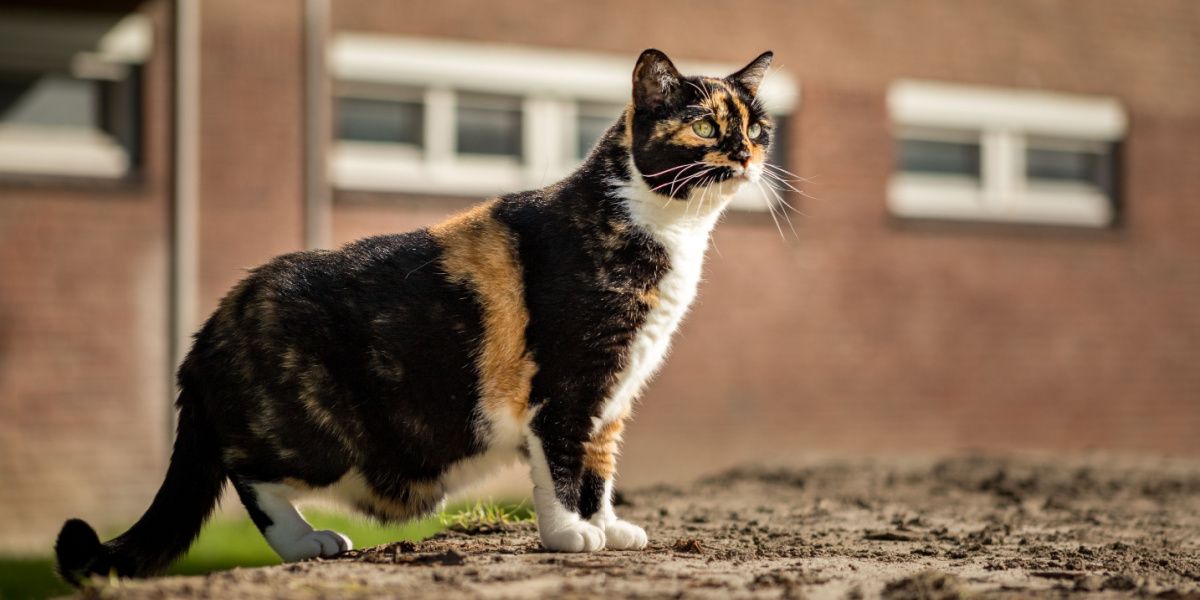
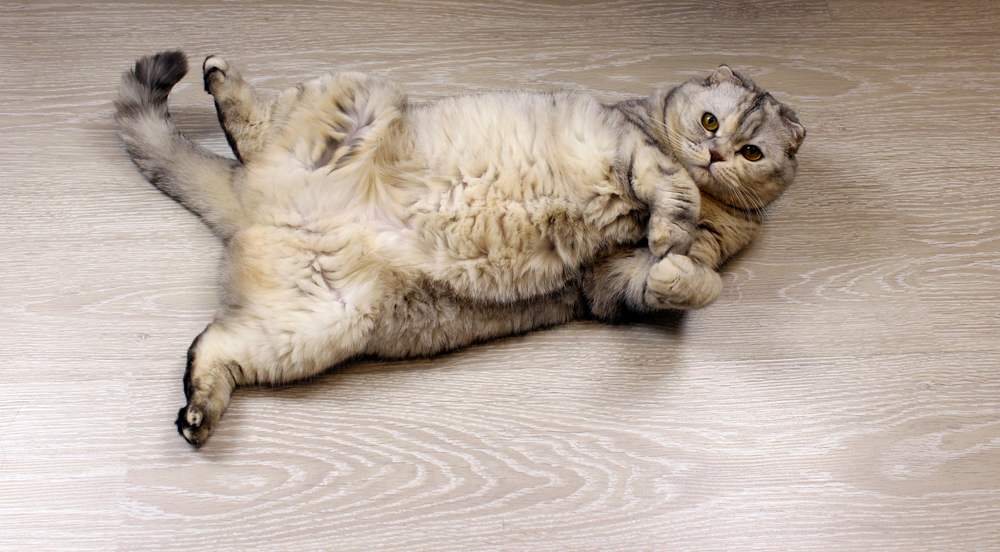
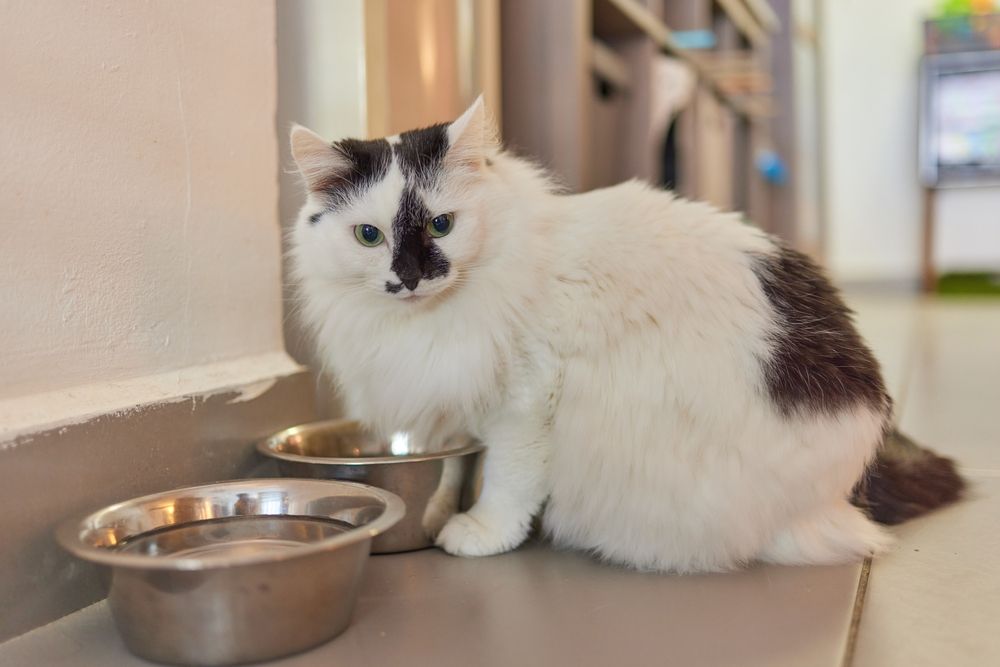



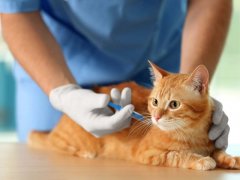
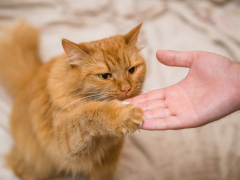



This article came to my inbox in timely fashion! My husband and I care for a feral cat. He built her a house and we have a camera inside the house and outside to watch not only for predators but to watch her comings and goings as the way our house is situated we can’t always see when she arrives. We feed her twice a day (12 hours between the feedings). I had sent a picture to my sister (and fellow cat lover/owner) of my feral sleeping in her house and she remarked that our cat was an adorable chubby fur ball. And of course husband and I became concerned that perhaps we are overfeeding her. But when I look at her pictures that are not in a sleeping position she is a very health feral with her normal (I now know Primordial pouch) weight for a full time outdoor cat. It also helps to know she had two litters prior that we know of so that she was at one point carrying that extra weight. She was CR’d a year and half ago so no more litters, but at least I know that she is as healthy as she can be for an outdoor kitty.
I adopted my first cat three years ago, and at that time, I had no idea about the primordial pouch. When I brought Luna home, she had just been spayed. The incision was nicely healed, but the fur on her belly had not yet grown back. As the weeks went by and the fur started to grow back in, I noticed something protruding on her lower belly, and I could feel a lump there. I called the vet in a panic, thinking she had a tumor!!
In the meantime, before the appointment, I did some research about what might be wrong, and that’s when I learned about the pouch and what it was and why it was there. I called the vet the next day to cancel the appointment and mentioned the research I had done and what I had found. I felt a little silly, now knowing there was nothing wrong, but relieved at the same time that it was a part of her anatomy and perfectly natural.